Lynn Johnson

Lynn Johnson
After graduating from the Rochester Institute of Technology, Johnson was hired as the first woman staff photographer at the Pittsburgh Press. She stayed at the newspaper for seven years, and during that time she convinced the editors of the Sunday newspaper to let her do photo essays.
Since then, she has climbed the radio antenna atop Chicago's John Hancock Tower, clambered around scaffoldings with steelworkers, and lived among fishermen on Long Island and guerrillas in Vietnam. She has done in-depth portraits of celebrities including Stevie Wonder, Michael Douglas, Mr. Rogers, and the entire U.S. Supreme Court.
Johnson was a Finalist in 2017 in Explanatory Reporting for a deep and sensitive exploration of gender worldwide, using remarkable photography, moving video and clear writing to illuminate a subject that is at once familiar and misunderstood. Johnson was also a Finalist in 2019 in Feature Photography for a compelling, dignified photo narrative that provides an intimate look at the youngest face transplant recipient in the U.S.
Biography text taken from Johnson's portfolio website.
2017 Finalist
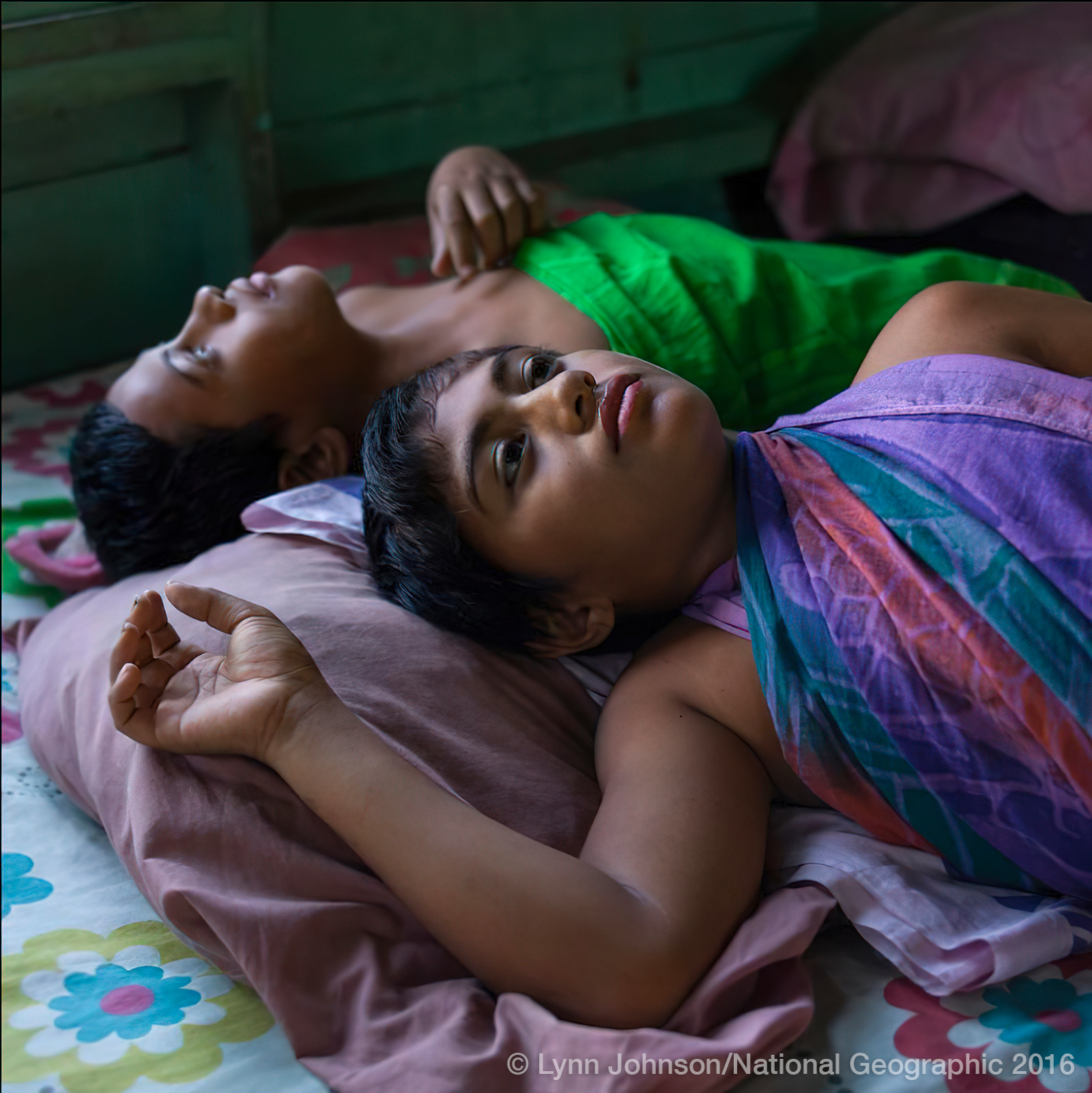
Explanatory Reporting
"For a deep and sensitive exploration of gender worldwide, using remarkable photography, moving video and clear writing to illuminate a subject that is at once familiar and misunderstood." - Pulitzer Board
Sandy, foreground, and Mandy take a break from the midday sun and heat, resting and whispering on a platform bed in Mandy’s home. The friends are dressed in lavalavas, traditional Samoan clothing worn by both women and men.
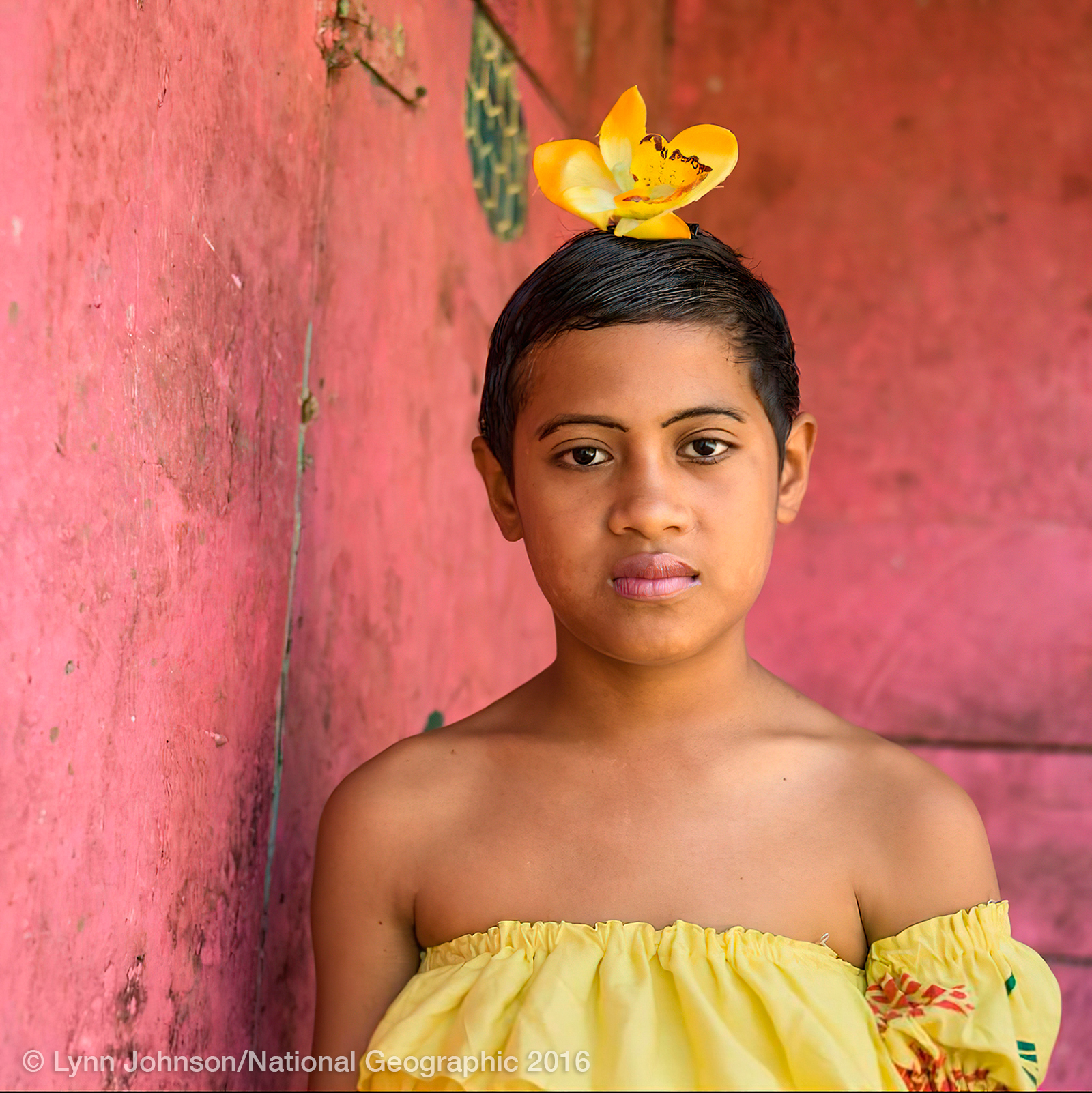
Mandy, wearing one of her favorite dresses, adorns her hair with a matching yellow blossom.
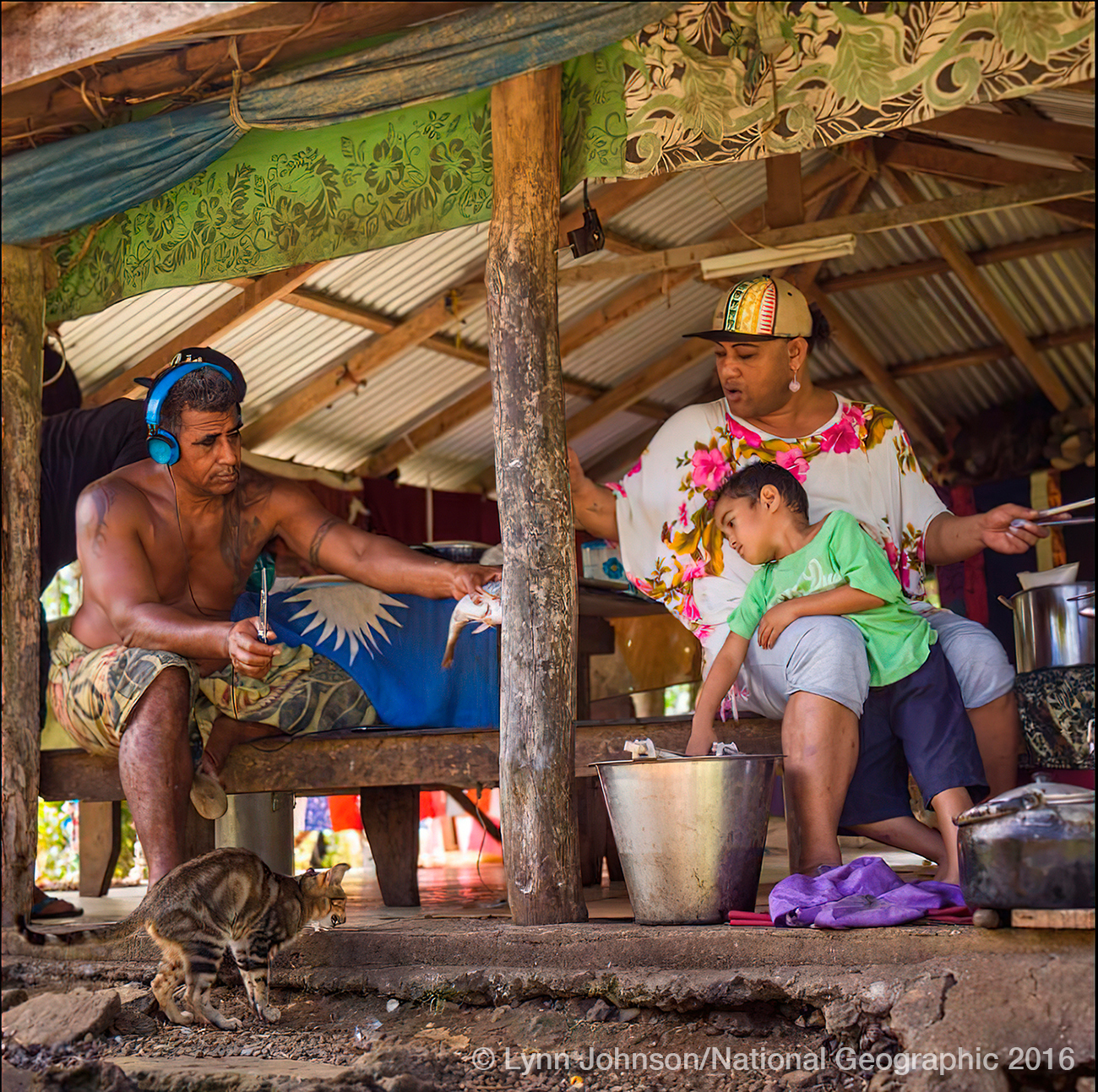
Trisha Tuiloma, right, and a cousin, left, help prepare the Sunday meal at Tuiloma’s mother’s house. Tuiloma is fa‘afafine, and she feels certain that her five-year-old nephew, lounging across her lap, is too.
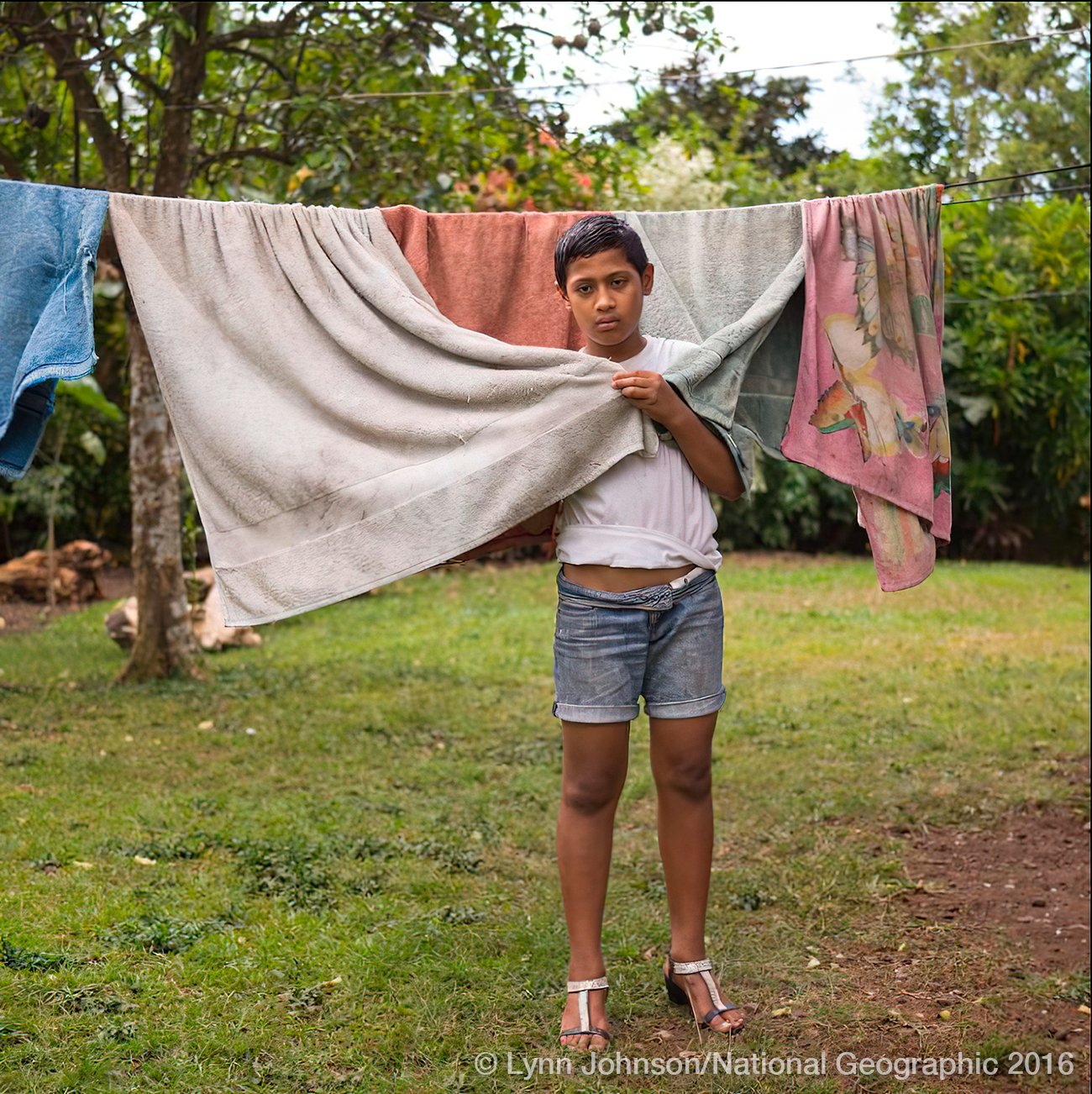

Wearing a suit to the eighth-grade prom was an early step on Ray Craig’s journey toward being a “trans guy,” although he decided to wait until after graduating from his middle school in New York State to go public. Now everyone calls him by male pronouns. Ray’s father wasn’t surprised to learn Ray identified as a boy, but “I wasn’t sure if it would be a six-week phase or a four-year phase or a permanent thing.” Next step: thinking about hormone blockers that suppress puberty.
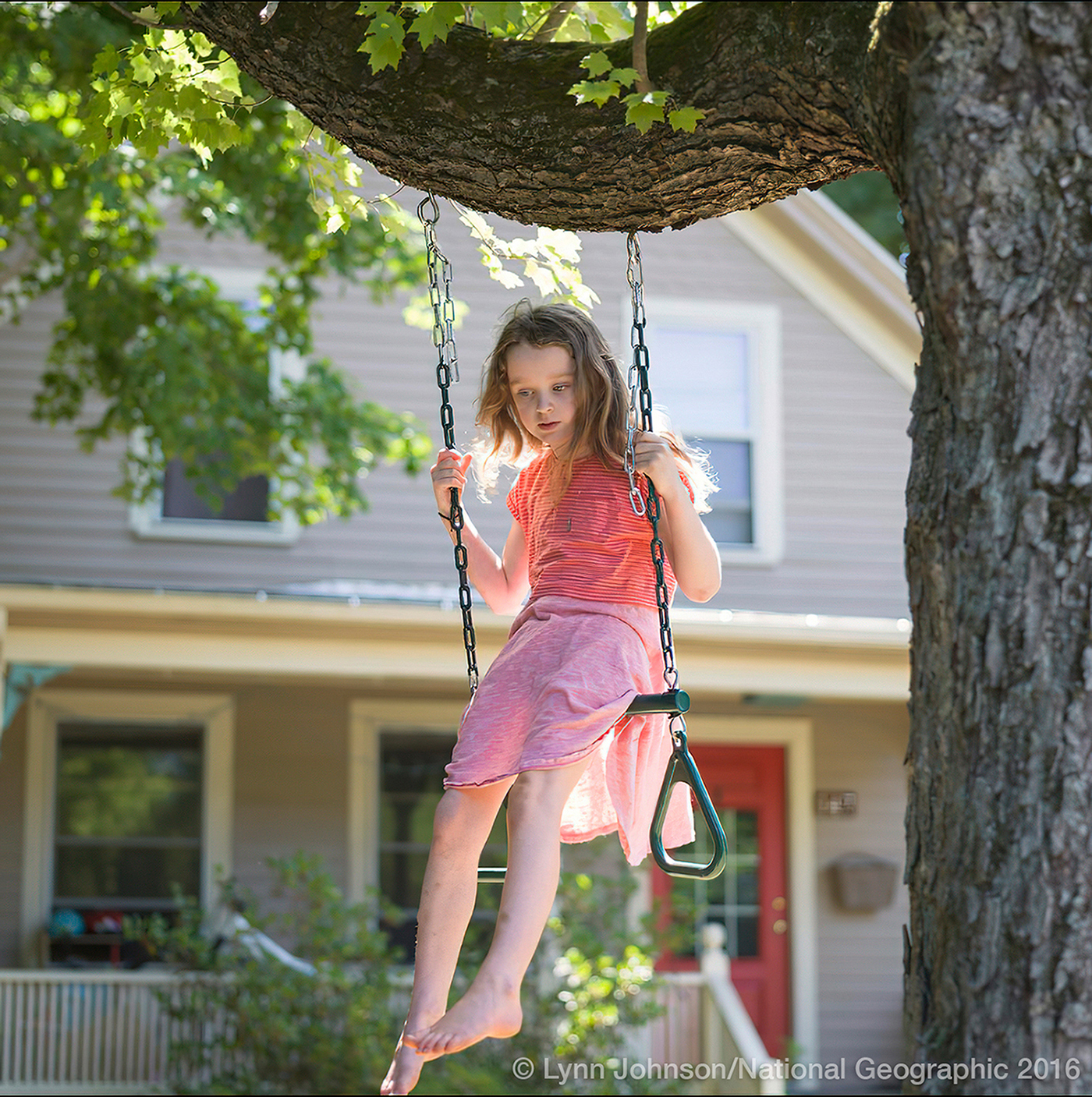
Oti, nine, was assigned male at birth but never felt that way. When she learned to speak, she didn’t say, “I feel like a girl,” but rather “I am a girl.” Oti brought her parents and three older siblings into the transgender activist community. “It’s been so great,” her father, David, said. “We’ve met incredible people who’ve gone through an incredible amount. She opened me. I’m her dad, but she is a leader for me.”

When Massachusetts twins Caleb, left, and Emmie, right, Smith were born in 1998, it was hard to tell them apart. Today, Emmie says, “When we were 12, I didn’t feel like a boy, but I didn’t know it was possible to be a girl.” At 17, Emmie came out as transgender, and recently she underwent gender-confirmation surgery. She played down its significance: “I was no less of a woman before it, and I’m no more of one today.”
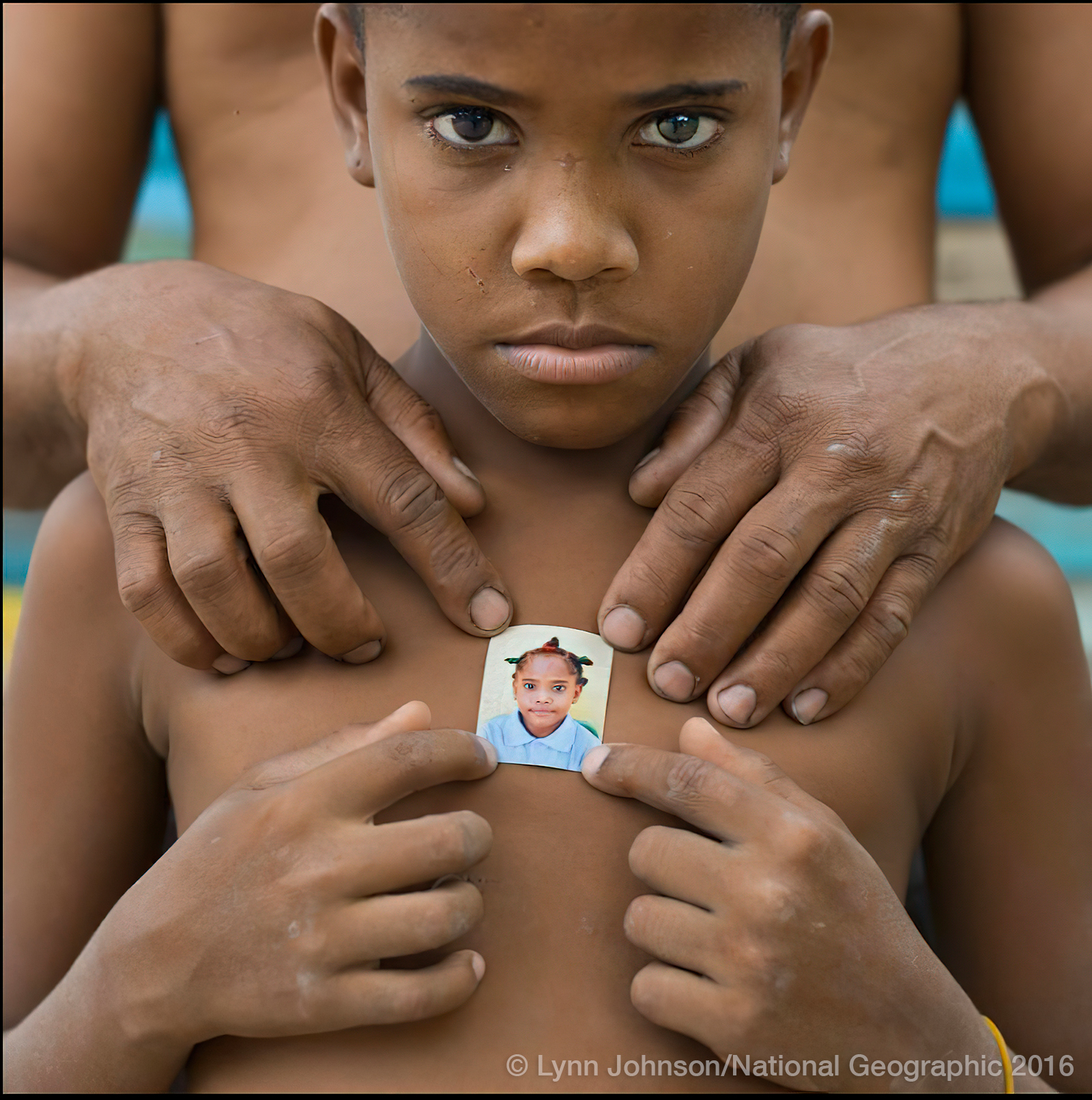
Carlos, 12, holds a photo of himself as a girl. He is one of a small group of children born in the Dominican Republic with an enzyme deficiency. Their genitalia appear female at birth — then, with a surge of testosterone at puberty, they develop male genitals and mature into men. His uncle simply says Carlos “found his own rhythm.”

Born with an intersex chromosomal condition, Emma, 17, had incomplete male and female anatomy. She was raised as a girl, always aware of her special situation. “I’m comfortable with my differences,” she said. Shy and inventive, she spends hours among the clouds in her bedroom in Florida creating intricate adventures and videos using My Little Pony dolls.
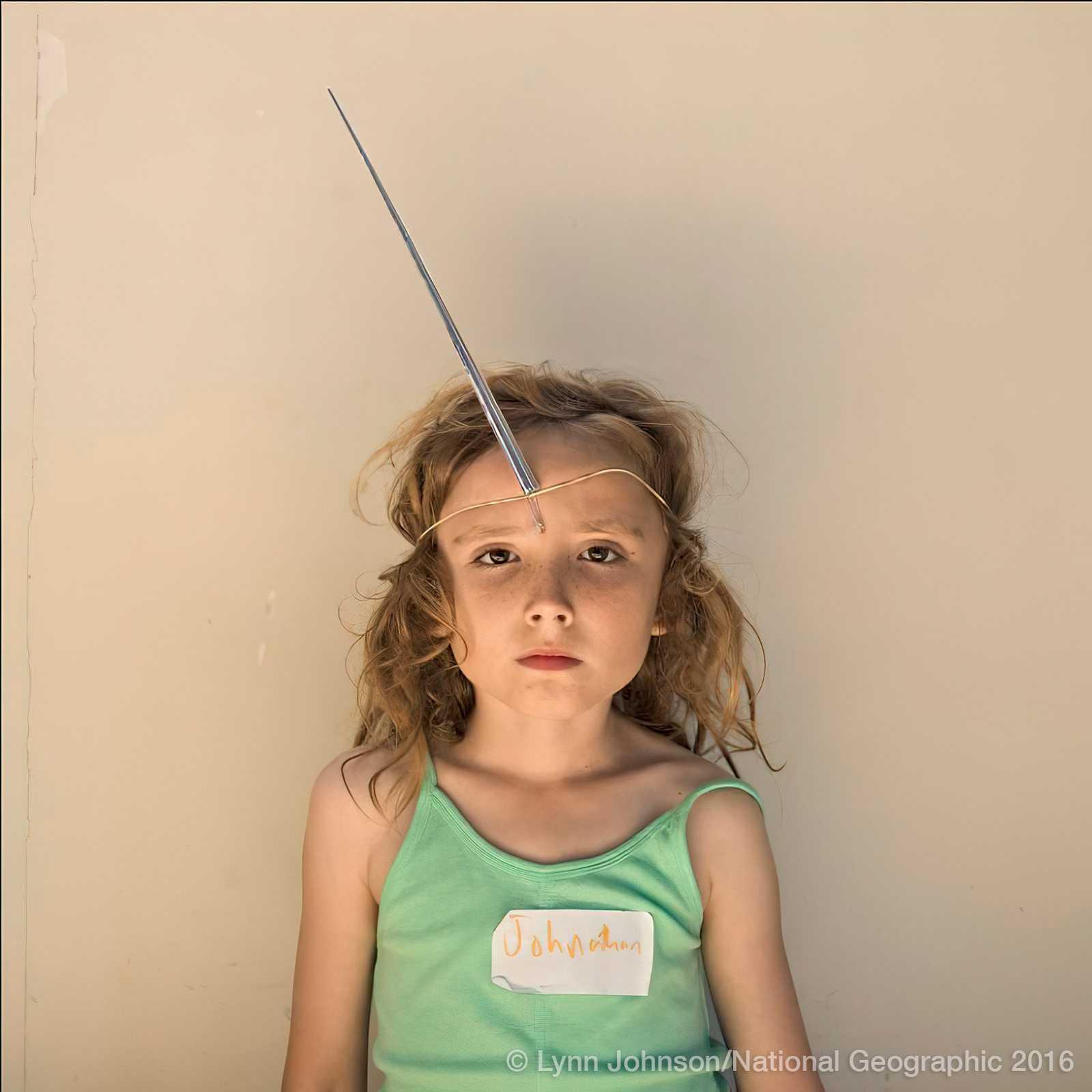
Jonathan, 8, has identified as both a boy and a girl at the same time since age two and a half. At California’s Bay Area Rainbow Day Camp, where children can safely express their gender identities, Jonathan tries on life as a unicorn.

In Samoa, best friends 12-year-old Sandy, left, and 10-year-old Mandy, in white T-shirt, do an impromptu dance with their friends and cousins. They identify as fa‘afafine, a gender other than boy or girl. Fa‘afafine children generally take on girls’ roles in play and family. As adults they remain anatomically male with feminine appearance and mannerisms. They help with household chores and childcare and choose men for sexual partners.

English, red hair, and Sasha (both street names) live with other transgender women in a storm-water diversion gully in Kingston, Jamaica. Many hide during the day to avoid being attacked and go out to look for sex work at night. Days after these photos were taken, two gangs doused everyone there and all their belongings with gasoline and set them on fire. Both English and Sasha were injured.
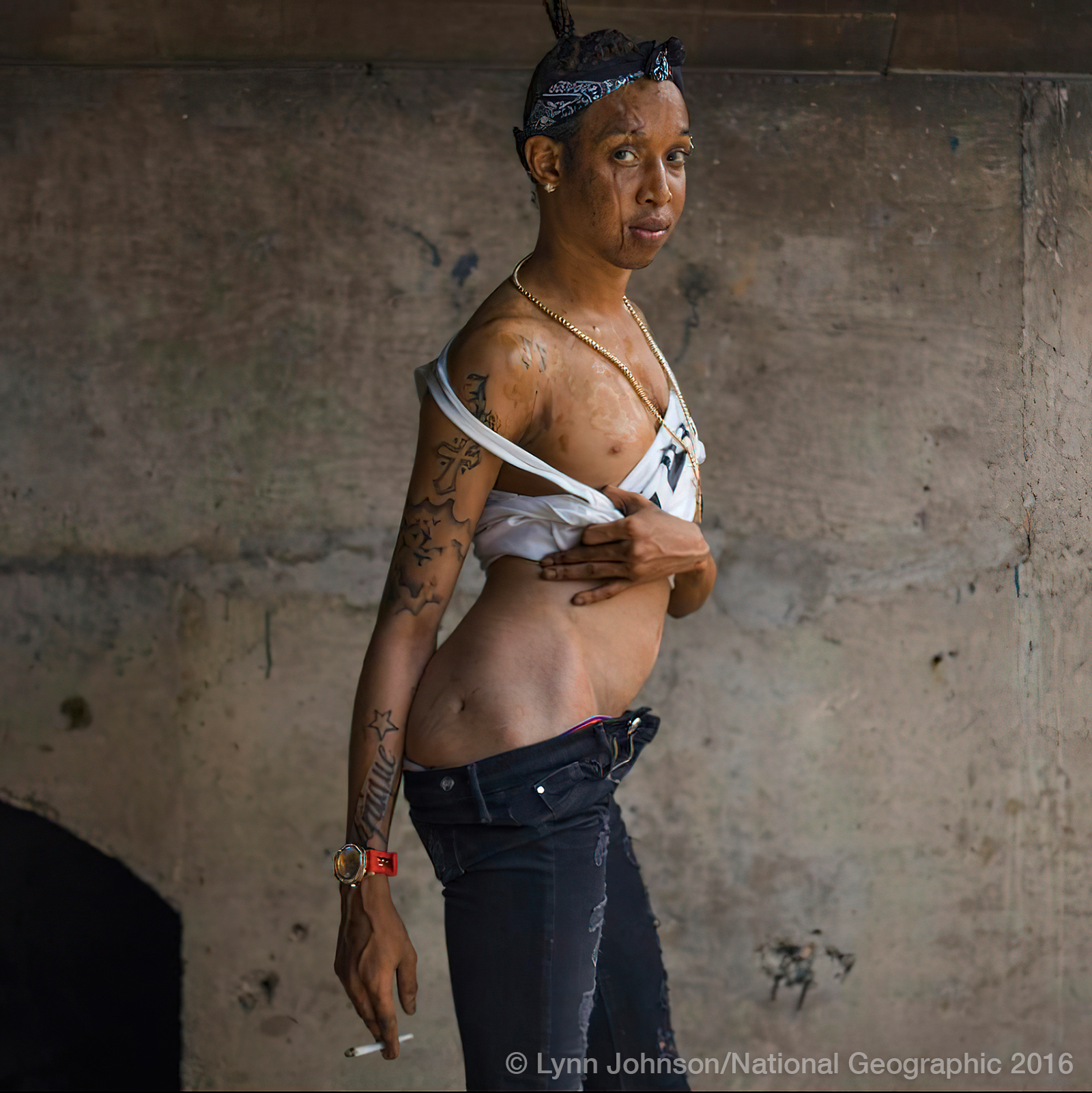
For five years Trina (her street name) has been “on the road” — a Jamaican phrase referring to the lifestyle of transgender people forced to leave home and do sex work to survive. Trina has been attacked with acid, knives, a machete, and a gun. She shows the scar from a bullet wound on her right hip.
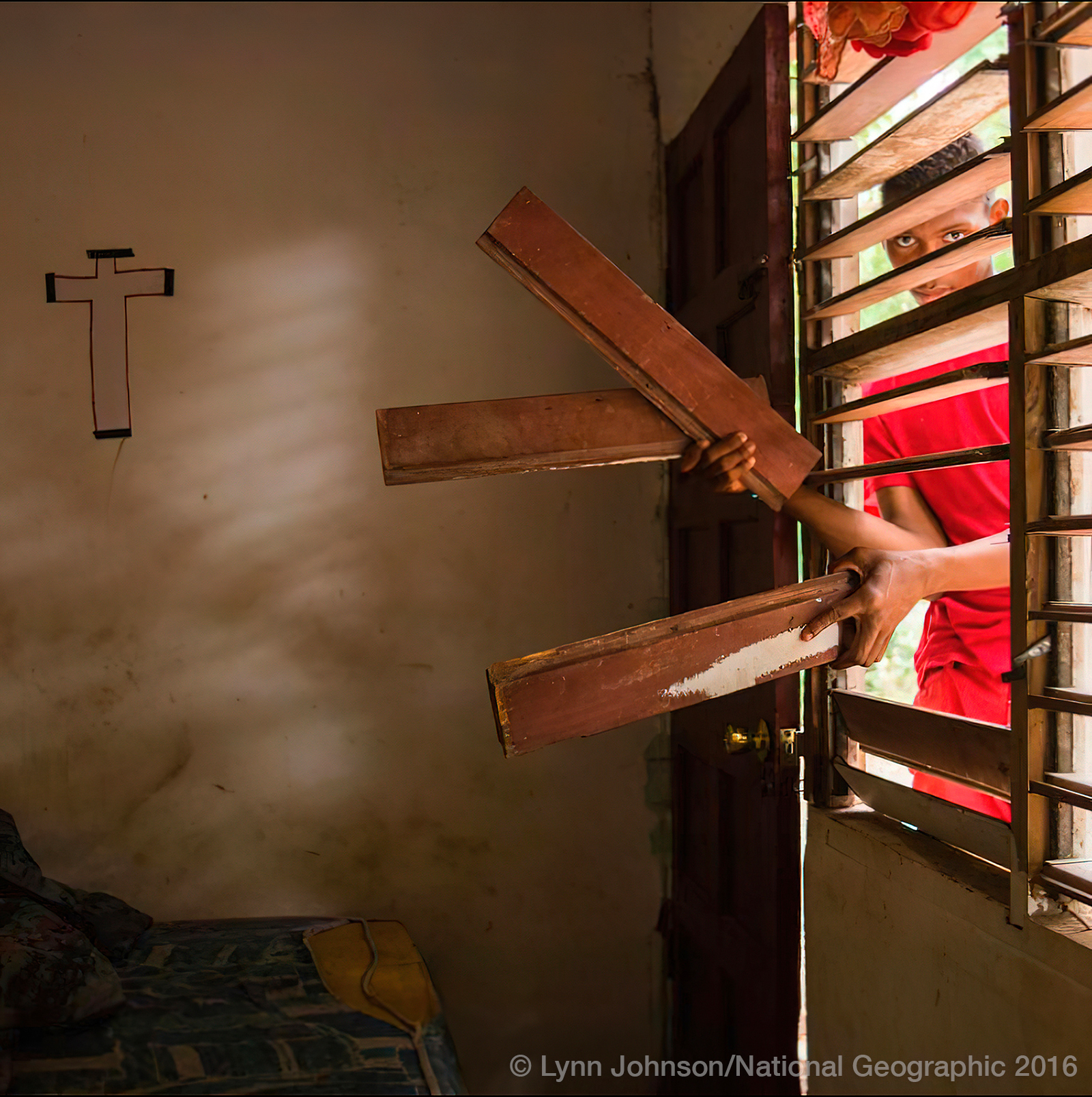
“Lizzie” demonstrates how easy it is for potential attackers to break into the abandoned house in Kingston that she and other transgender women have taken over, cleaned up, and made somewhat habitable. The cross on the wall, drawn by “Strawberry,” the house leader, represents a hope for protection from those who would do them harm.
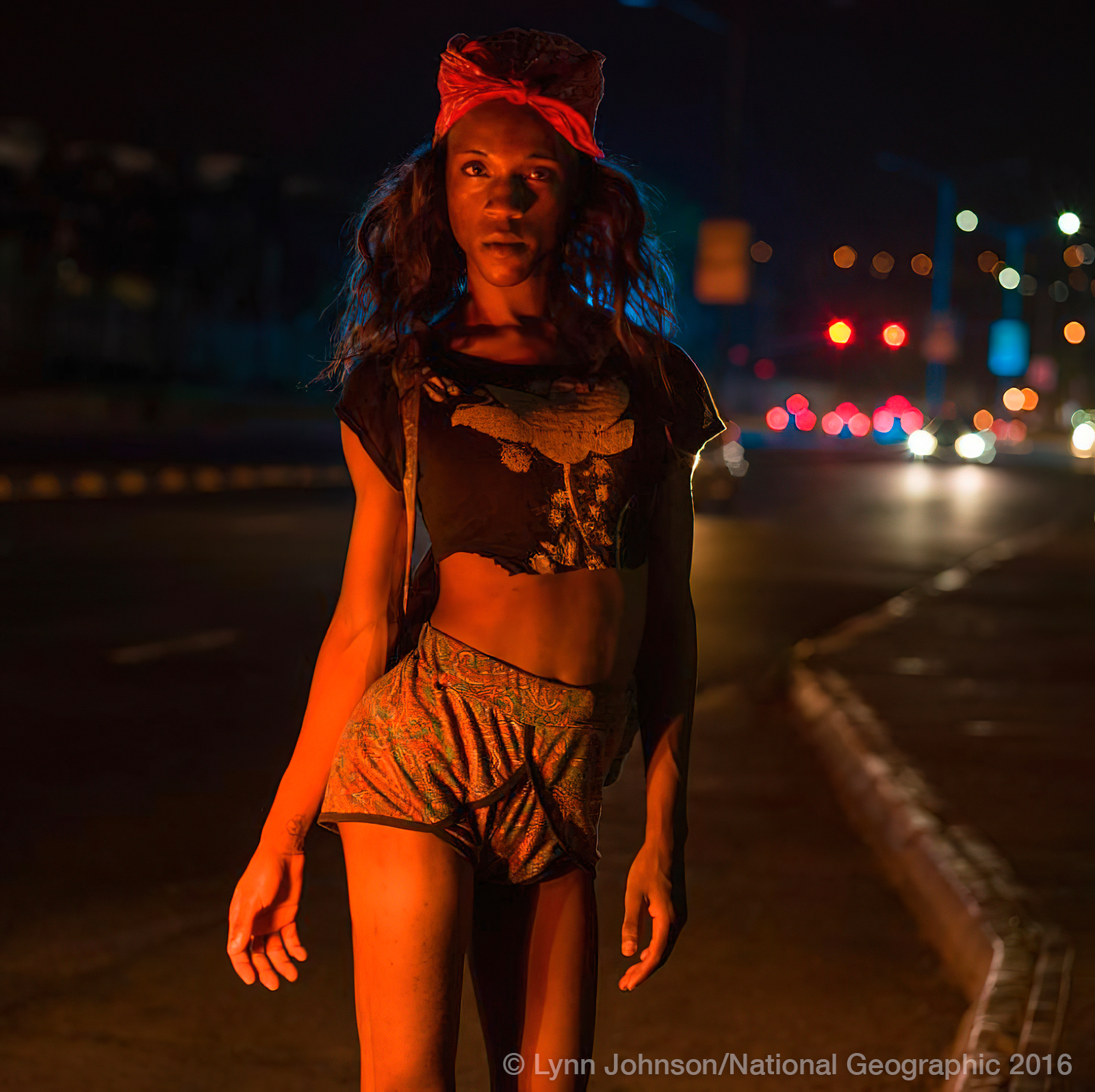
While Sasha identifies as a woman, she reserves her feminine expression for the time she spends doing sex work at night. Now 21, Sasha was outed in eighth grade when a schoolmate crawled under a bathroom-stall door to see her body. She was threatened and attacked by family and friends.

When she was four, Trinity Xavier Skeye almost completely stopped talking, started chewing on her boy clothes, and said she wanted to cut off her penis. Her alarmed parents took her to a therapist, who asked them: “Do you want a happy little girl or a dead little boy?” Trinity’s mother, DeShanna Neal, is a fierce advocate for her child, who is now, at 12, on puberty blockers. Trinity is the first minor in Delaware to be covered for this treatment by Medicaid.
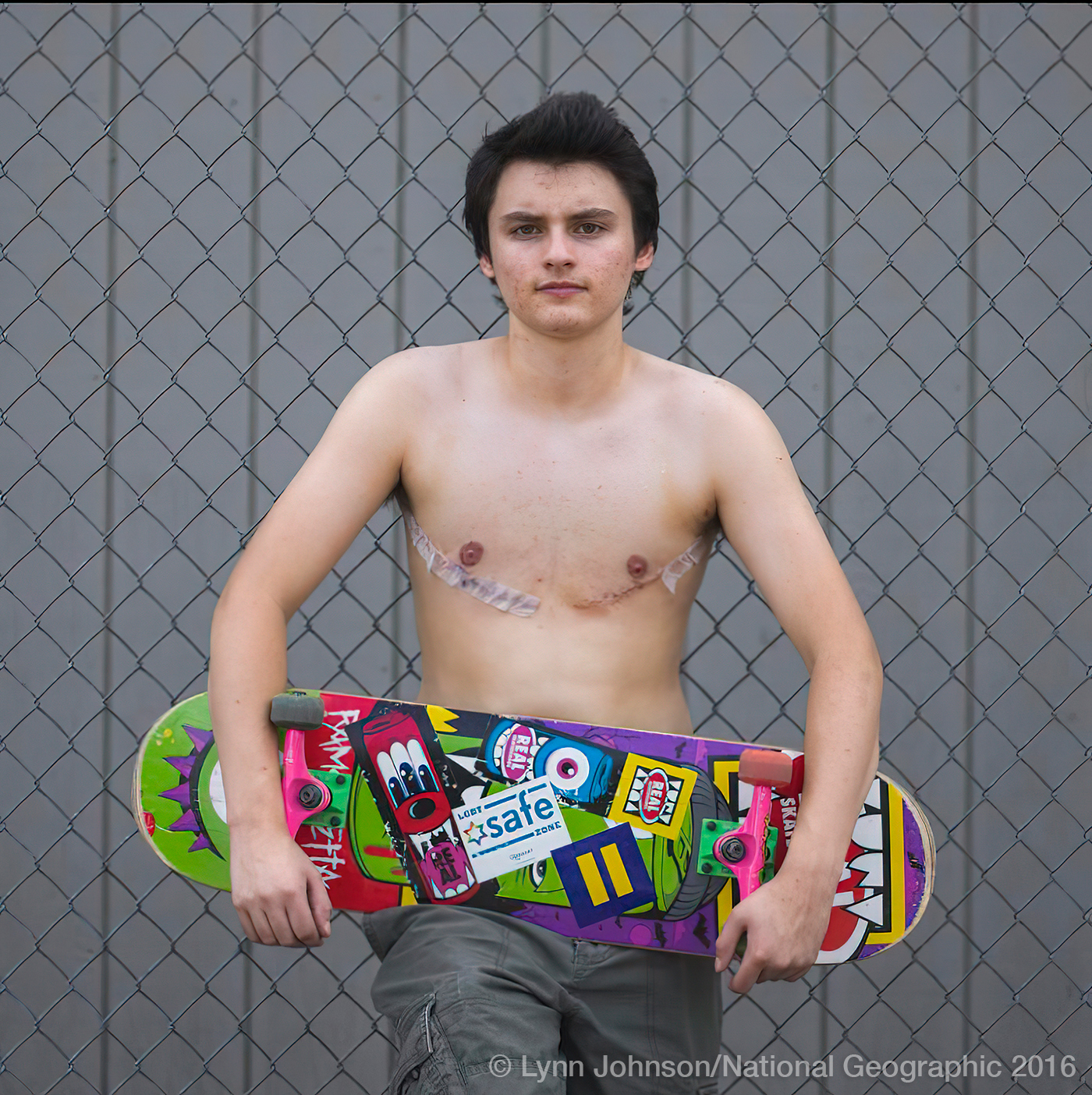
Assigned female at birth, Hunter Keith, 17, has felt himself to be a boy since fifth grade. By seventh grade he told his friends; by eighth grade he told his parents. Two weeks before this photo was taken, his breasts were removed. Now he relishes skateboarding shirtless in his Michigan neighborhood.

Four years ago while watching a TV interview of a transgender girl, both Corey Maison (on trampoline) and mother Erica (seated) realized they are transgender. Corey, now 14, began transitioning from boy to girl soon after, but Erica kept her realization a secret in order to focus on Corey and her other children. Erica is now transitioning to Eric, an inconceivable option for him a generation ago. “The biggest step was coming out to my husband. I wouldn’t have done it without his support.”